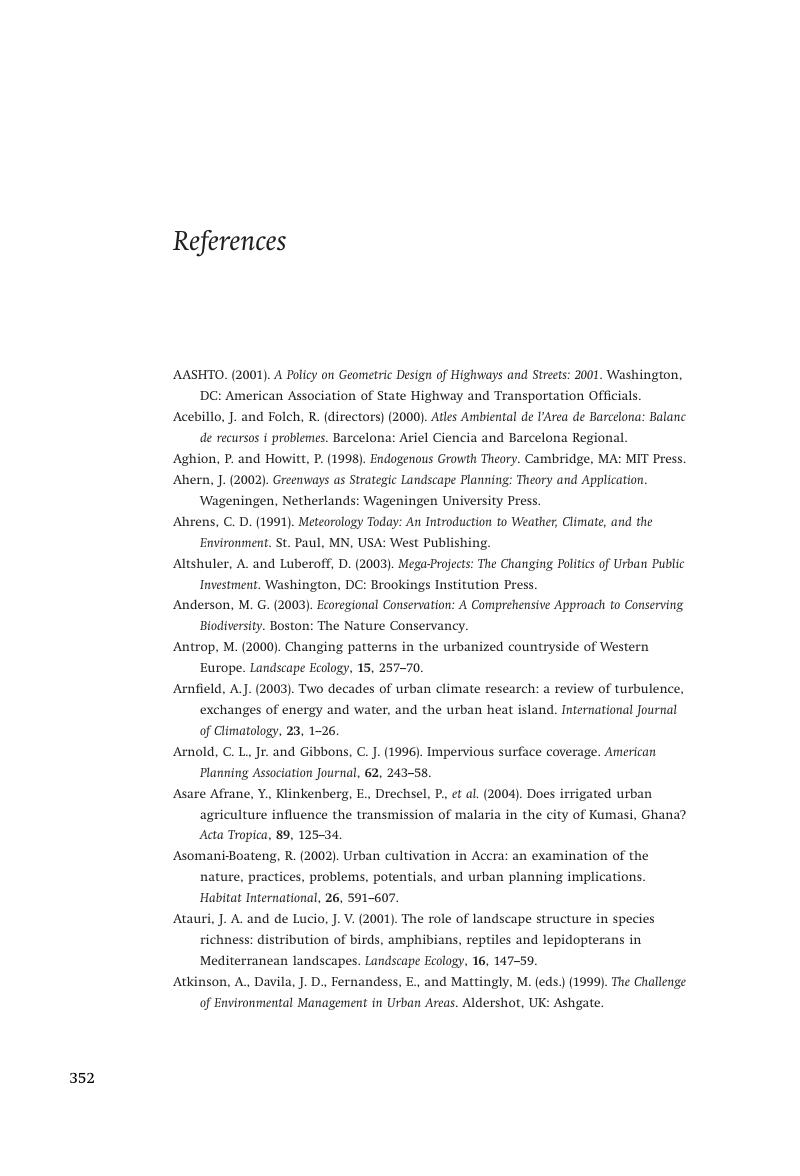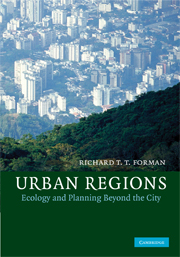Book contents
- Frontmatter
- Contents
- Foreword
- Foreword
- Preface
- Acknowledgments
- 1 Regions and land mosaics
- 2 Planning land
- 3 Economic dimensions and socio-cultural patterns
- 4 Natural systems and greenspaces
- 5 Thirty-eight urban regions
- 6 Nature, food, and water
- 7 Built systems, built areas, and whole regions
- 8 Urbanization models and the regions
- 9 Basic principles for molding land mosaics
- 10 The Barcelona Region's land mosaic
- 11 Gathering the pieces
- 12 Big pictures
- Appendices
- References
- Index
- Plate section
- References
References
Published online by Cambridge University Press: 04 August 2010
- Frontmatter
- Contents
- Foreword
- Foreword
- Preface
- Acknowledgments
- 1 Regions and land mosaics
- 2 Planning land
- 3 Economic dimensions and socio-cultural patterns
- 4 Natural systems and greenspaces
- 5 Thirty-eight urban regions
- 6 Nature, food, and water
- 7 Built systems, built areas, and whole regions
- 8 Urbanization models and the regions
- 9 Basic principles for molding land mosaics
- 10 The Barcelona Region's land mosaic
- 11 Gathering the pieces
- 12 Big pictures
- Appendices
- References
- Index
- Plate section
- References
Summary

- Type
- Chapter
- Information
- Urban RegionsEcology and Planning Beyond the City, pp. 352 - 379Publisher: Cambridge University PressPrint publication year: 2008



